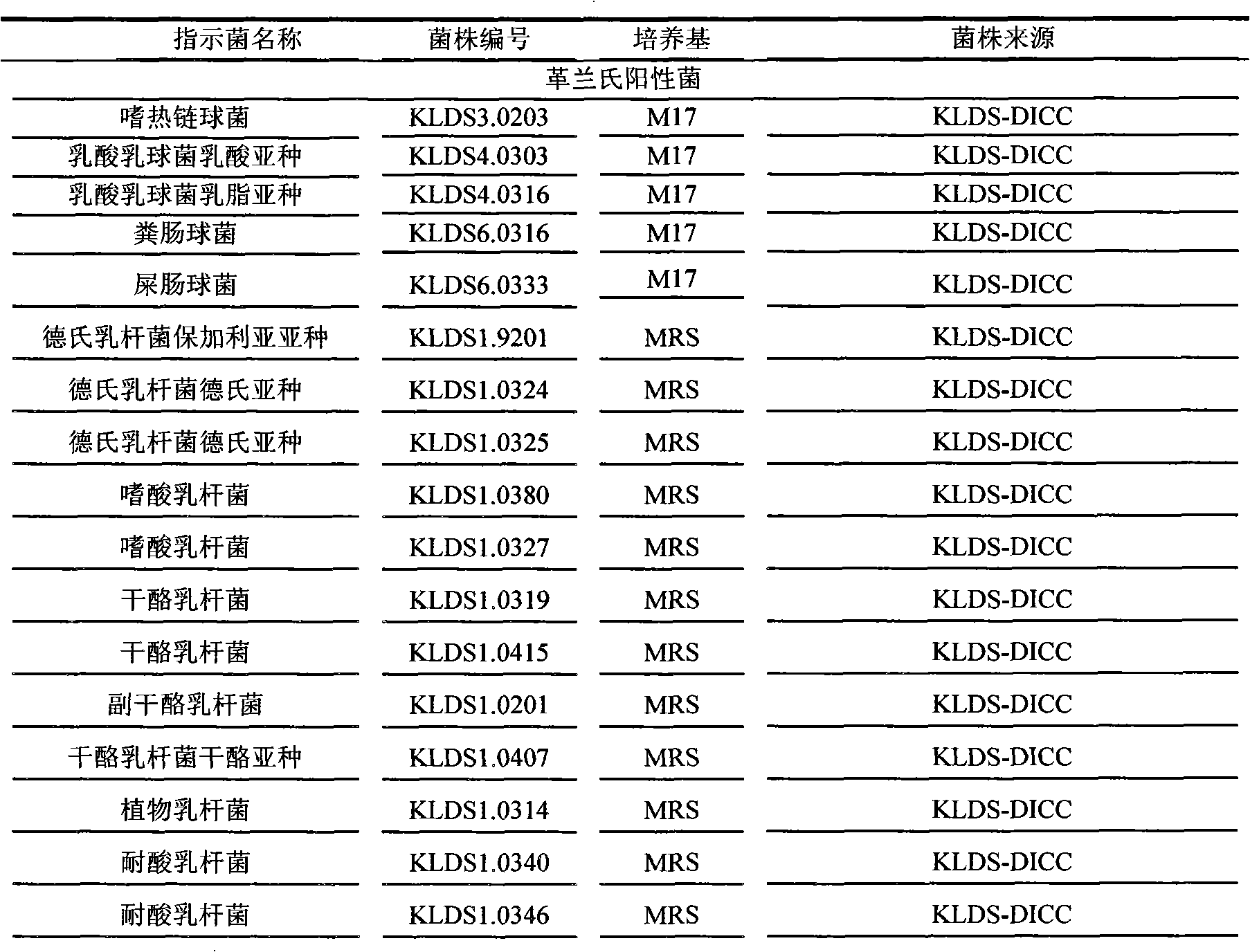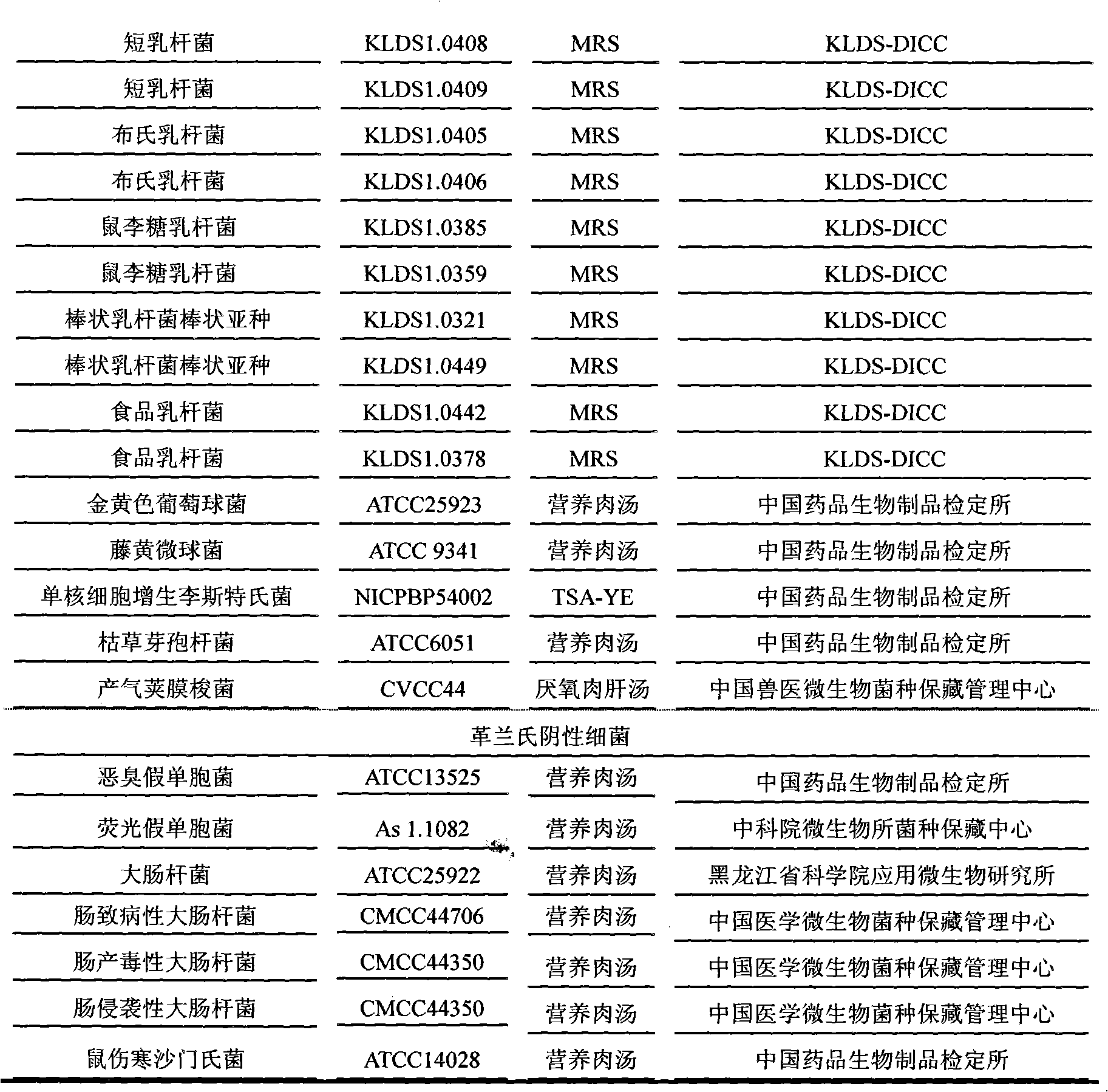Lactobacillus plantarum and bacteriocins produced by lactobacillus plantarum and capable of inhibiting Gram negative bacteria
A technology of Gram-negative bacteria and Lactobacillus plantarum, applied in the field of microorganisms, can solve the problems of accelerating the application of bacteriocins, restricting development, and unstable antibacterial activity
Inactive Publication Date: 2010-08-25
NORTHEAST AGRICULTURAL UNIVERSITY
View PDF0 Cites 26 Cited by
- Summary
- Abstract
- Description
- Claims
- Application Information
AI Technical Summary
Problems solved by technology
Therefore, it can only be used to inhibit food spoilage caused by Gram-positive bacteria, and cannot inhibit food spoilage caused by Gram-negative bacteria such as Escherichia coli, Salmonella, and Shigella.
In addition, many bacteriocins, such as Nisin, have less stable antibacterial activity in food and lose their activity at neutral pH, which limits their development in the food industry. Therefore, it is necessary to vigorously develop other bacteriocins and develop broad-spectrum bacteriocins. New lactic acid bacteria bacteriocins that are efficient, stable to heat and pH, accelerate the application of bacteriocins in the food industry, and improve food quality and safety
Method used
the structure of the environmentally friendly knitted fabric provided by the present invention; figure 2 Flow chart of the yarn wrapping machine for environmentally friendly knitted fabrics and storage devices; image 3 Is the parameter map of the yarn covering machine
View moreImage
Smart Image Click on the blue labels to locate them in the text.
Smart ImageViewing Examples
Examples
Experimental program
Comparison scheme
Effect test
Embodiment 1
Embodiment 2
Embodiment 3
the structure of the environmentally friendly knitted fabric provided by the present invention; figure 2 Flow chart of the yarn wrapping machine for environmentally friendly knitted fabrics and storage devices; image 3 Is the parameter map of the yarn covering machine
Login to View More PUM
| Property | Measurement | Unit |
|---|---|---|
| diameter | aaaaa | aaaaa |
Login to View More
Abstract
The invention relates to a strain of lactobacillus plantarum and bacteriocins produced by the lactobacillus plantarum and capable of inhibiting Gram negative bacteria. The bacteriocins have the advantages of broad antibacterial spectrum, thermal stability and stable pH, degradability by protease, no residue in a human body and high safety. A lactobacillus plantarum strain is preserved on June 29, 2009 with a preservation number of CGMCC No.3151. A production strain is obtained by separating 'Jiaoke', a conventional dairy product in Inner Mongolia; on a MRS culture medium, colonies are ivory and round with a protruded center and orderly edges; the strain has two blunt round ends and a short and straight stem; and the size of the strain is 0.4 to 0.7 mu m *2 to 3 mu m. The strain is a non-spore Gram positive bacillus, and is identified as the lactobacillus plantarum through an API50CHL sugar alcohol fermentation test, a 16S rRNA sequence homology analysis test and a recA gene multiplex PCR method. The lactobacillus plantarum KLDS1.0391 is used as the production strain and is fermented and purified by using the improved MRS culture medium to obtain the bacteriocins of the lactobacillus plantarum. The bacteriocins are used in food preservatives.
Description
Technical field: The invention relates to a strain of lactobacillus plantarum and the bacteriocin produced by it which can inhibit Gram-negative bacteria in the field of microorganisms. Background technique: Food safety is an important issue worldwide, especially in developing countries like my country. In recent years, the number of patients with foodborne diseases in my country has remained high, and food poisoning caused by microorganisms is very serious. The continued increase in foodborne illness has caused the public and governments to re-examine the effectiveness of current methods of food preservation. Adding chemical preservatives is an important food preservation method used by humans, but long-term research has found that excessive consumption of synthetic preservatives has adverse effects on blood pressure, heart, kidneys, etc., and even some chemical preservatives have carcinogenicity, teratogenicity and It is easy to cause food poisoning and other problems. T...
Claims
the structure of the environmentally friendly knitted fabric provided by the present invention; figure 2 Flow chart of the yarn wrapping machine for environmentally friendly knitted fabrics and storage devices; image 3 Is the parameter map of the yarn covering machine
Login to View More Application Information
Patent Timeline
 Login to View More
Login to View More Patent Type & Authority Applications(China)
IPC IPC(8): C12N1/20C12P21/02C07K14/335C07K1/36C07K1/34C07K1/30C07K1/20C07K1/16C12R1/25
Inventor 孟祥晨贡汉生王辉
Owner NORTHEAST AGRICULTURAL UNIVERSITY
Features
- R&D
- Intellectual Property
- Life Sciences
- Materials
- Tech Scout
Why Patsnap Eureka
- Unparalleled Data Quality
- Higher Quality Content
- 60% Fewer Hallucinations
Social media
Patsnap Eureka Blog
Learn More Browse by: Latest US Patents, China's latest patents, Technical Efficacy Thesaurus, Application Domain, Technology Topic, Popular Technical Reports.
© 2025 PatSnap. All rights reserved.Legal|Privacy policy|Modern Slavery Act Transparency Statement|Sitemap|About US| Contact US: help@patsnap.com



